Beyond Insurance Payouts: Tallying Up the Cost of Hurricanes
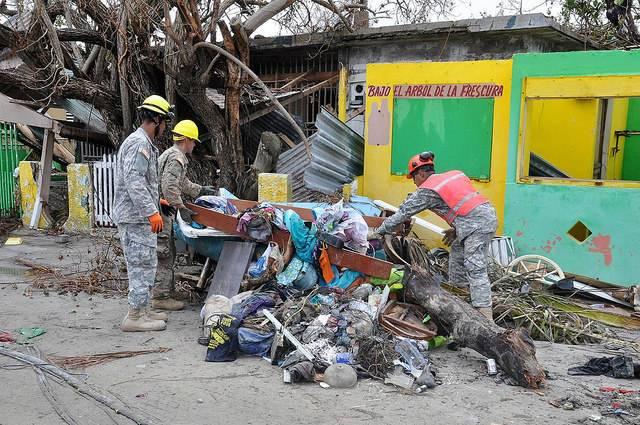

A hurricane's wrath has often been measured in the cost of insurance claims, particularly when it comes to private property damage. For this year's largest two storms, Harvey and Irma, this figure is destined to be a whopper. More than $25-30 billion (at the low end) are expected to be paid out by homeowner insurers -- and that doesn't include flood insurance payments, which could raise the tab at least another $11 billion
But this year's barrage of storms taught us an important lesson: The cost of climatic events isn't really limited to what insurance companies pay out.
That may sound like a no-brainer, but quite often it's the insurance companies who publicize financial impact of natural disasters. That's because in the United States most homeowners do have insurance (usually because they are required to as part of their mortgage agreement) and the damage is often reflected in those claims.
And until recently, widespread destruction to multiple state grids wasn't really a concern. In many past years, power outages have been localized: Hurricane Opal in 1995 wreaked havoc across the northwest tip of the Florida Panhandle, flooding and knocking out power in some towns. Hurricane Dora, in the 1960s, was considered monumental for its time with 125 per-hour winds, but damage to the electrical grid pretty much was limited to where it made landfall on Florida's eastern coastline.
But not this year.
The estimates are still coming in, but the damage to electrical grids in Florida, Texas and Georgia from Harvey and Irma alone are expected to tally in the billions. Florida, which receives most of its electrical power from Florida Power and Light (one of several subsidiaries of NextEra Energy, Inc.) reported $1.3 billion in damages from hurricane Irma's class 4-5 winds. Duke Energy figured its losses in Florida to be around $500 million.
In Texas, Harvey left downed power lines and widespread flooding across the Houston area. Although it was downgraded to a tropical storm by the time it reached Houston, American Electric Power still said it had more than $200 million in damages to the grid.
All in all, more than a half-dozen power companies, including renewable energy provider NRG, sustained damage that in some cases, has resulted weeks without power to many towns. NextEra, which is being sued by several cities and homeowner groups for what they say was a lack of preparation, announced it will be imposing another $4 surcharge to customers' bills to offset the cost of Irma's wrath.
But power grids and insurance claims are still only a small measure of the impact of this year's climatic events. To get a real sense of what hurricane 5 damage means, experts are turning to Puerto Rico. Hurricane Maria, smaller but just as powerful as Irma in windspeed, is proving that the real human cost of climatic events isn't necessarily reflected in insurance payouts.
Many homeowners in Puerto Rico aren't insured, or if they are, their policies often don't include damage from wind. One source placed the number of homes without appropriate insurance coverage on the island at about 50 percent. That means for many of the 3.8 million residents, repairing their homes will have to come out of pocket or, if lucky, with limited assistance from the federal government.
But to make things worse, federal flood insurance also wasn't available in many parts of Puerto Rico. That's because the federal government required municipalities to meet certain standards that were prohibitive for many low-income, rural areas of the island.
It's a catch-22 that has left many communities on the bankrupt island with little options: too poor to meet the standards for insurance and not enough funds to shoulder the price tag of a direct hit from a hurricane.
And as Quartz writer Ana Campoy points out, the cost of a natural disaster is clearest when you can size it up against the population and their economy. For Texas, Harvey's price tag equaled about 5 percent of its gross domestic product -- sizable, but still not the largest part of the purse. Irma's share of decimation equaled about 6 percent of Florida's GDP. Puerto Rico's on the other hand was shouldered by a much smaller population with a relatively small land mass. For Puerto Ricans, the cost of Maria's destruction is equal to about 30 percent of its GDP. For Texas and Florida residents, Campoy notes, that's about $3,000 per resident. For Puerto Ricans, it's about $10,000.
With an unprecedented list of nine hurricanes this year, climatologists are trying to look ahead to get a sense of what might be in store for future years. The fact that the White House has (finally) acknowledged that climate change does exist as a phenomena is good news. But will it help buttress regions like Puerto Rico, Texas and Florida from unforeseen impacts of hurricanes and other climatic events with funding and new expertise? We'll have to see.
Flickr image: The National Guard
In the Face of Climate Change: The Challenges of Sustainability Leadership
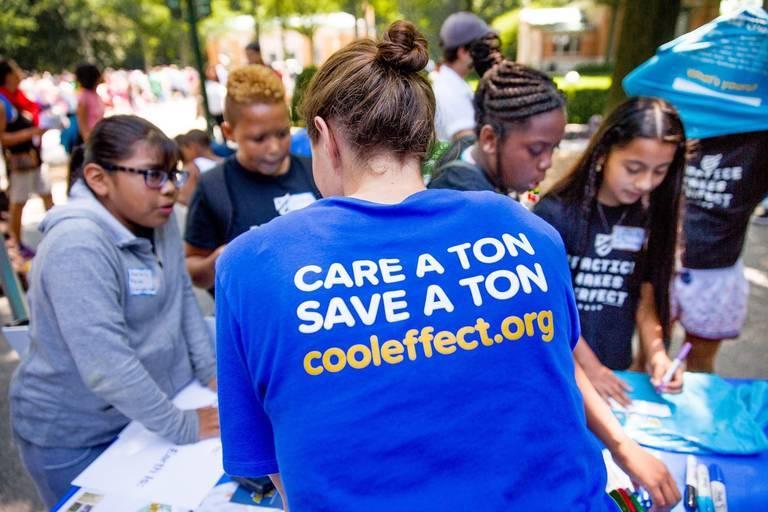

Climate change affects everyone--every individual, business, city and nation. And the risks are even more acute in the world’s poorest regions, compounding inequality worldwide.
Thankfully, many environmental leaders from multiple sectors have refused to be intimidated by the scale and complexities of climate change. The obstacles to taking on climate action are many, including communicating the risks to citizens in the first place. After all, many people understandably have a hard time wrapping their heads around this phenomenon.
“The challenge for organizations raising awareness about climate change is that we can’t ‘see' the problem,” said Marisa de Belloy, CEO of Cool Effect, an NGO that uses crowdfunding to support what it says are the best possible carbon-reducing projects worldwide.
The journey to ensure equal access to clear air, water and energy is one de Belloy shares with other sustainability leaders in government, academia and the nonprofit space who gathered in San Francisco for the Idea Forum during Dreamforce 2017.
Technology is one way in which people can learn about carbon emissions by “seeing,” as de Belloy explained during an interview with TriplePundit earlier this week. Cool Effect brought Flir thermal imaging infrared cameras to Dreamforce so attendees could have a visual of carbon entering the atmosphere - even from their breath as they exhaled.
“You can see the CO2 coming out tailpipes coming out of cars,” said de Belloy, “And so you can see this carbon pollution, and when you can see something, you can actually fight it.”
An embrace of such technology is one tactic by which Cool Effect can demonstrate the risks of climate change. Furthermore, such an approach can help the NGO communicate the benefits of purchasing what it describes as “high-quality” carbon offsets that can deliver results for local communities worldwide, from Madagascar to Peru.
In the meantime, Cool Effect also invests in technologies so that its staff can track progress and demonstrate results to donors and stakeholders. “Everyone can do their part to eliminate GHGs, but a trackable, verifiable system for this is critical,” explained de Belloy at a panel during Dreamforce.
Joining de Belloy and Cool Effect in this fight is Water.org. Co-founded by Matt Damon and Gary White after they decided to merge their organizations almost a decade ago, this NGO seeks to expand access to clean water and sanitation by adopting market-based solutions. This strategy goes far beyond the traditional “dig a well” mantra that long defined how nonprofits operated in developing countries. Instead, the organization wants citizens to take action and control their destiny by financing access to a water main or building a toilet. Water.org also has a long history of partnering with companies, including Levi Strauss and PepsiCo, in order to accelerate impact.
“Safe water is critical for transforming lives, and affordable financing is the way to expand access worldwide,” said Josh Gunkel, Water.org’s director of technology.
Water.org has taken on several approaches when it comes to raising funds so that it can help enable families to secure safer water and sanitation. Of course, there is the conventional text-to-donate program, as in the NGO’s current fundraising campaign promoting World Toilet Day on November 19. That program is trying to raise funds for micro-loans that can assist the 2.4 billion people currently living without a toilet.
And it when it comes to microfinance, Water.org is nimble about the types of projects it is willing to fund. The organization’s greatest success story is its WaterCredit program, which is approaching half a billion dollars in small loans. That financing, says Water.org, has so far improved the lives of over 7 million citizens. Those who have benefited include many young children, who are now able to attend school rather than be condemned to either a life where most of the day is spent hauling water - or stuck at home sick due to poor sanitation and water-borne illnesses.
“Water is central to our lives, and it’s definitely impacted by everything that’s happening in the globe,” Gunkel said. “It puts even more pressure on people to survive and gain access to water.”
What was interesting about listening to these leaders during a technology conference was how in the end, they emphasized the importance of low-tech solutions to either improve the lives of the poorest citizens, or prevent climate change from becoming worse. Cool Effect seeks to scale the adoption of clean cookstoves or planting of forests. Water.org wants people to just be able to tap into water mains.
And in government, Deborah Rafael is trying to push San Francisco’s sustainability agenda into overdrive by investing in carbon sinks for better soil management, or by eliminating organic waste from the city’s waste streams. From Rafael’s point of view, technology can help make the process seamless, but the end game has hardly changed.
“The antidote to apathy is taking action to motivate citizens to change their ways,” Rafael told the audience while on stage with de Belloy and Gunkel.
The media by which these organizations seek to inspire citizens may have evolved rapidly in recent years, but the desired outcomes are still pretty much the same. “Communicating climate change is not just about sustainability, but also about how it can inspire social change,” explained de Belloy in wrapping up Tuesday’s discussion.
Image credit: Cool Effect/Facebook
COP 23 Talks Kick off in Bonn, Germany with Host Island Nation Fiji

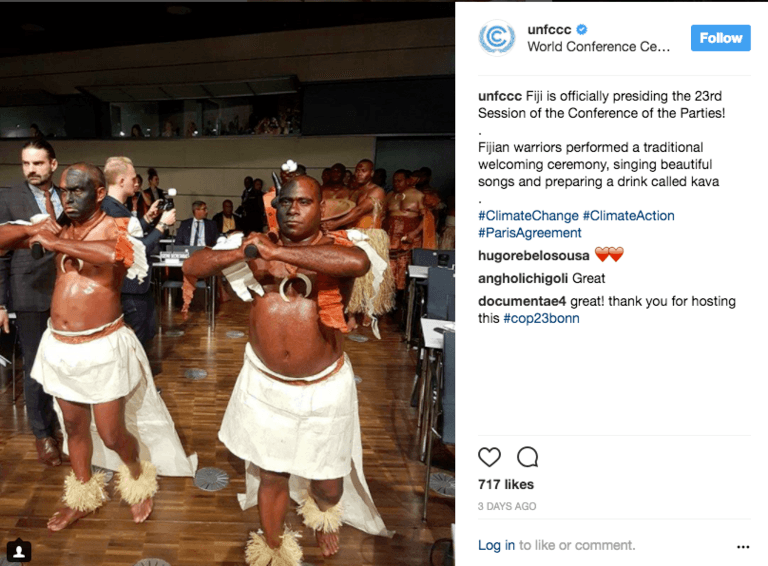
This week the global climate talks known as COP 23 kick off in Bonn. Two days ago, Syria -- SYRIA, PEOPLE -- announced that it would sign on to the international climate agreement known as the Paris Accords, leaving the U.S. the only holdout.
Actually, make that attempted holdout. While U.S. President Donald Trump made a big announcement about his intention to leave the agreement, there's no actual way to formally leave until 2020.
The talks are hosted by Fiji. This is the first time an island nation on the front lines of the climate change battle has hosted. Given the logistical challenges and costs of hosting the 23,000 expected attendees, Bonn is the physical host. But Fiji has made its presence known in other ways, with a traditional welcoming dance (see above), a decree that the talks embody the spirit of “Talanoa” - a Fijian concept of open discussion, and even a VR booth to showcase the impacts of climate change on the islands.
The plan for this year's climate talks is to focus on implementation -- how to measure carbon and how countries will report on their progress meeting their Intended Nationally Determined Contributions INDCs.
While the U.S. is still in, at least until 2020, the Trump administration can impede progress in subtle ways, for example by sending a smaller, less powerful, delegation and hosting events that promote coal, natural gas and nuclear energy.
Despite these drawbacks, the larger global effort to address climate change continues full steam ahead. WRI research confirms that almost 50 countries have already reached "peak carbon." 1200+ companies, states, cities and universities have told the world "We are still in." And companies continue to set and reach assertive climate goals.
In fact, the uncertainty around the U.S. participation left a leadership vacuum which is quickly being filled. California Governor Jerry Brown is on the ground in Bonn to discuss linking the California and EU carbon markets, and former NYC Mayor Michael Bloomberg pledged a $15 million dollar donation from his foundation to bridge the funding gap that may occur due to the U.S. withdrawal.
Let's call this one a glass half full of melted icebergs.
Image credit: UNFCCC Instagram
How Women Leaders in Technology Transform the Non-Profit World
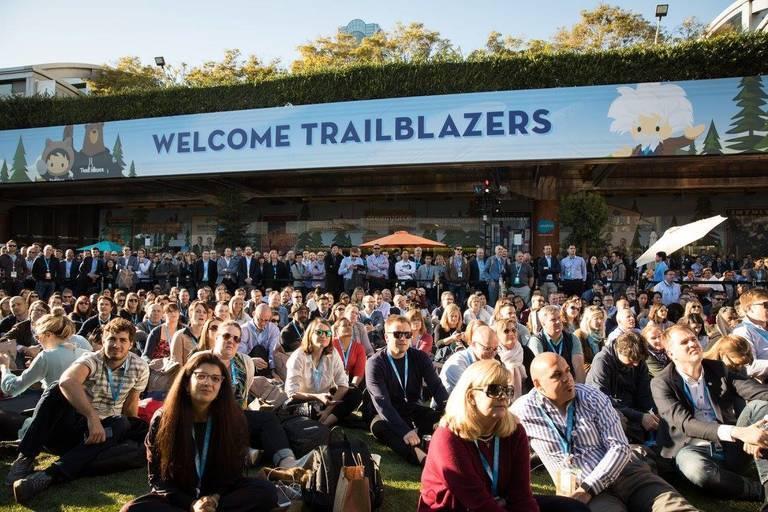

In recent years, the nonprofit sector has witnessed more women ascending to technology management positions. These leaders are on the front lines of discussions on management and employee engagement. And at a time when many organizations are shifting to a social enterprise model, technology remains central to NGOs’ missions.
During this week’s Dreamforce conference in San Francisco, TriplePundit had the opportunity to listen to some of these leaders during events Salesforce.org organized for the non-profit and education sectors.
These women are particularly inspiring in how they are pushing social change worldwide, while inspiring a cultural shift within their own organizations. As more donors and foundations seek results - which can have various definitions as in impact, reach or changes in policy - women leaders harness software to transform lives, and at the same time, help their organizations become far more nimble.
And they are doing so in areas as diverse as refugee assistance, tackling social and economic problems, or finding a cure for disease.
One example is Jennifer Douglas, Executive Vice President and Chief Information Officer of the National Multiple Sclerosis Society. During a career that first started in the corporate world and eventually led to her working within the nonprofit sector, Douglas found that a huge part of her job is connecting everyone to the organization's mission. Information technology is critical as colleagues need to able to see and demonstrate the MS Society’s results.
“Technology is not about the tool itself; it's about the organization’s strategy,” Douglas said during a Dreamforce Idea Forum earlier this week.
For example, the MS Society’s adoption of social media is not just about the show-and-tell on Twitter or Facebook, but it has also become a means for the organization to raise more money for scientific research. “The embrace of social media has allowed us to raise millions of dollars,” said Douglas.
Of course, Douglas and many of her counterparts still face plenty of challenges as they are tasked with measuring their impact. Nevertheless, her move to the nonprofit sector has been a day-to-day rewarding experience for Douglas, as she told the audience that her work with the MS Society has been a way for her to give back.
Seeing those results makes the challenges worthwhile to Douglas, even as she watches her role shift constantly in order to keep the MS Society at the forefront of efforts to prevent and cure this disease. “We’re developing an ecosystem that really connects our constituents all the way from the volunteer to the fundraiser to the person who has MS,” she told 3p during an interview during the conference.
Em Fackler of the International Rescue Committee (IRC) embarked on a journey similar to that of Douglas. After a successful career as a software engineer, she found a second career with the organization that has supported 28 million of the 68 million displaced people worldwide.
When she was considering the offer from the IRC, Fackler received a fortune cookie that gave a final nudge: "You will have a major impact on a significant humanitarian issue of our day,” read the message that helped her make that leap.
Of course, the performance record Fackler built over the years made her invaluable to the IRC’s mission. “Marrying technical issues with problem-solving really guided my career as I moved to the NGO sector,” she told the Dreamforce audience.
And such problem-solving skills are crucial to Fackler and her team as the NGO wades through the various problems refugees confront worldwide and the different stakeholders to which the IRC must answer. “Different groups have different perspectives on refugees,” she said.
As she strives to make technology more vital to the IRC’s mission, Fackler seemed to downplay how being a woman affects her leadership style. Nevertheless, many women managers could relate to how she approaches working with her colleagues.
“It’s not really ‘woman-specific,’ but it’s about putting employees first,” she explained during an interview with 3p. “And in the case of the IRC, putting our beneficiaries and clients first. For my employees worldwide, how can I best ensure that they’re focused on what they want to do, which is to support the mission of the IRC?”
Many women would respond that having their voices heard in the first place is a huge challenge in this space, whether they work within the technology sector or have such a function within their organization. Khuloud Odeh, Chief Information Officer of the Urban Institute, echoed Douglas and Fackler in inspiring women to not only make their voices heard, but to consider a career in technology.
“For women in technology, having that seat at the table is a powerful way to make a difference,” said Odeh.
The importance of technology in an organization’s strategy can actually help a budding technology professional find herself in a decision-making role. “Almost all companies today are a tech business, and now we see this in the NGO world,” she reminded the Dreamforce audience.
But what about someone who is interested in a technology career, and wants to make a difference, but does not necessarily have the experience? Odeh reminded everyone of the old adage that what is studied in college is not necessarily going to become the profession in which that student eventually finds herself. “It's not about your background - it's about your passion,” she said.
Furthermore, the way in which technology is interwoven into just about every function within an organization means that any profession will have to be prepared to ask questions and learn. In Odeh’s words, “The best thing you can do with your team is to be comfortable being uncomfortable.”
Once a management position in technology is landed, however, many women still wonder if they will be listened to. To then end, Odeh offered some sage advice to both the men and women in the audience: “Good leaders always make sure to ask their team members questions so they feel included.”
And in the end, said Fackler, women in technology have to remember to find the will to speak up. “The more we speak, and the more comfortable we are speaking up, the more everyone benefits, as all of our ideas are valuable.”
Image credit: Jakub Mosur Photography/Dreamforce Facebook
U.S. Army Agrees: Climate Change Makes It Harder To Do Your Job


The prestigious medical journal The Lancet is out with a bombshell of a climate change report. It's the first major attempt to synthesize climate data with human health impacts. Considering the complexity of that task, experts in the field have raised questions about the report's methodology. However, a look at the US Army illustrates the essential truth behind the report: climate change is a public health concern because it affects human health, and is changing the way humans live and work.
About the new Lancet climate change report
The new report comes under an initiative of The Lancet that began last year, called The Lancet Countdown: Tracking Progress on Health and Climate Change. The inaugural 2016 report set the strategic direction for a series of annual reports.
The 2017 report surveys 40 indicators to reach a network of three conclusions:
First, climate change is already affecting global health, with a disproportionate effect on "those who are most vulnerable, and people in low- and middle-income countries."
Second, there is an urgent need to make up for lost time, and accelerate responsive policies:
The delayed response to climate change over the past 25 years has jeopardised human life and livelihoods.
Third, and somewhat more optimistically, the report notes that global policies have been trending in a more responsive direction in recent years yielding "immediate and tangible benefits for human health, cleaning up polluted air, ensuring healthier diets, and encouraging physical activity."
The critics weigh in
Robinson Meyer of The Atlantic provides a thorough rundown of the report, noting that "climate change is already afflicting human health worldwide, exposing tens of millions of elderly people to excess heat while possibly reducing the ability of hundreds of millions of workers to do their jobs."
The first part of that summing up is a relatively simple matter of correlating medical records with climate data. That part of the report is largely beyond dispute.
The new report is also consistent with another Lancet report that correlates other health threats with climate change, such as an extended allergy season and an increase in insect-borne infectious diseases.
However, as Meyer points out, measuring the impact on human activity is a much more complex endeavor.
Meyer reports that academic economists have, for example, questioned The Lancet's finding on labor capacity:
...The Lancet report makes an eye-popping assertion about the global economy, arguing that climate change has already significantly harmed labor capacity around the world. Between 2015 and 2016—which are the second- and first-hottest years ever recorded—it argues that “outdoor-labor capacity” fell by 2 percent. Since the year 2000, outdoor-labor capacity has fallen by 5.3 percent overall, it claims.
The problem, according to Meyer's sources, is that the conclusion is not based on the kind of metrics normally used by economists. It is based on a small number of experiments carried out by U.S. military and industrial sources, which attempted to measure the productivity of soldiers under different temperatures.
Speaking of the U.S. military...
Although Republican leadership in Congress has been forcefully opposed to climate action in the U.S., the defense community has long recognized climate change as a significant threat to national security.
Climate change has fostered regional strife and a mounting series of humanitarian crises that are already affecting U.S. military readiness and force effectiveness. That includes rising sea levels, which are already threatening coastal military infrastructure including the important naval station at Norfolk, Virginia.
Another impact concerns the ability of the U.S. military to carry out effective training routines -- in essence, its ability to do its job.
Last year the U.S. Army published an article on just that topic, under the title "Climate change affecting Army training."
Army Captain Todd Lopez lays out the general picture:
For the Big Green Machine -- America's Army -- climate change, efforts to prevent it, or to at least adapt to it are about more than saving Mother Earth or even the whales. It's about training, training space, how the Army fights, how often the Army will be called upon to fight in the future, and where.
Specifically, Lopez focuses on the need for training grounds that ready U.S. Soldiers for deployment in areas like Afghanistan and Iraq. One such facility, at Fort Irwin, California, was recently wiped out by an extreme weather event associated with climate change -- three years of drought followed by flash flooding:
"...Much of [the facility] was destroyed. We couldn't use those ranges for training. And that's a unique asset in the Army. It affected the training cycle. And there was a significant cost to fix that."
Lopez also cites flooding, melting permafrost and erosion at other Army training facilities around the country.
Aside from extreme weather events, another area of concern is the health effects of air quality and heat on Soldiers. The U.S. Army has developed specific heat categories under which training must be curtailed, and those episodes are increasing dramatically.
In addition, Lopez notes that the Defense Department's supply chain can be affected by rising sea levels and extreme weather events that disrupt the global economy, with a consequent impact on training and readiness.
The Army's own manufacturing facilities are also vulnerable to water resource issues related to climate change.
Regardless of questions over The Lancet's methodology, climate change is already affecting the way U.S. soldiers work.
The U.S. Army -- and the entire Department of Defense -- is already responding and transitioning to renewable energy.
It's well past time for President Trump, EPA chief Scott Pruitt and Republican leadership in Congress to show some support for our troops, by supporting the global response to climate change.
Workers Sew a Nightmare into Zara’s Supply Chain


As widely reported on news outlets including Newsweek, and fanned by outrage on social media, the Spain-based clothing company has been accused of not paying some of its workers. The company may be inclined to place the blame on a rogue supplier, but labor and human rights activists will not buy any such excuses.
Unlike most apparel companies, Zara for years had eschewed sourcing clothing from factories that they did not own in Asian countries as far away as Bangladesh to Vietnam. The retailer (and its parent company, Inditex) long stood out for being vertically integrated.
Such a system had long been long been one of Zara’s greatest strengths, as the company harnessed technology (such as the personal digital assistants, or PDAs, of yesterday) before many of its competitors. The outcome has been lean inventories and nimble responses to consumer trends as shoppers were thrilled again and again with the constant change in fashion lines. Lead times were quick, as clothing was stitched together in nearby countries such as Morocco and Turkey - and of course, across the Iberian peninsula. Clothing could go from factory to shelf in mere days instead of weeks.
But as the company grew, it would only become natural that some of the chain’s clothing would have to come from contracted companies. And according to the Associated Press, one of those factories, owned by a Turkish company named Bravo, has been accused of not paying its employees on time, if at all.
“I made this item you are going to buy, but I didn’t get paid for it,” is an example of one such tag shoppers had found. Such notes also encouraged Zara’s customers to exact pressure on the company so that they can receive their backpay.
One of the results has been a petition on Change.org, which is close to meeting its goal of having 25,000 people sign onto this campaign.
Zara has found itself mired in controversy before, from poaching designs from artists to accusations of animal cruelty within its supply chain. Allegations of slavery in factories providing the company clothing have also dogged Zara; one such case occurred in Brazil several years ago.
The company’s trouble in Turkey come less than a month after Inditex claimed it had entered into an agreement with the International Labor Organization to boost “best practices” for labor conditions within its factories.
To date, Zara nor Inditex have publicly commented on Bravo or its workers’ accusations.
Image credit: Mike Mozart/Flickr
Innovations in Corporate Social Impact


By Belinda Ryan
“Is it too difficult for companies to achieve financial and social impact simultaneously?” This was the question being posed by One World Founder & CEO Scott Saslow at the Innovations in Corporate Social Impact Summit on Nov, 2 at Cooley LLP in San Francisco. The answer was a resounding “no,” as attendees discussed the examples of Bay Area companies who are innovation leaders in how they design their strategy, measure results and harness capital and people to create wider social, economic and environmental benefits. Presenters ranged from organizations such as Gap Inc and Vodafone Americas Foundation who have developed impactful programs in-house, to relatively newer enterprises such as Revolution Foods and Numi Organic Tea who were established with a social mission at their heart.
The keynote session was led by Ira Ehrenpreis, founder and managing partner of DBL Partners and moderated by Catherine Chen, senior vice president of RBC Wealth Management. Both joked that they had been using capital markets as a tool and a lever to make positive sustainable impact long before it was in vogue. In recent years Catherine has seen the socially responsible investing side of wealth management grow as clients are now demanding more transparency and guidance in their investment portfolios. In 2017 the Global Impact Investing Network’s (GIIN) annual survey estimated that there are now at least $114 billion worth of impact investing assets under management.
Ira referred to the huge interest in impact investing from millennials, who have underpinned the growth of the sector. DBL partners runs a $400m impact investing fund, which aspires to a “no sacrifices” approach, infusing investments with positive social, environmental or regional economic impact without compromising financial returns. He discussed DBL’s track record of investment in clean energy, and described their investment in the Farmer’s Business Network as an example of where radically new innovations replace centuries old practice. “Part of being a good [venture capitalist] is to do something before it comes popular” he said.
Director of Global Social Impact at Pearson Jennifer Young described how her company had decided to bring their foundation back in-house, so that social impact strategy could be better aligned with corporate strategy. Project Literacy is a global campaign founded and convened by Pearson to help the 750 million people in the world who cannot read and write, and who are more likely to suffer social and economic hardship as a result. One innovative aspect of the global campaign is the Project Literacy Lab, formed from a partnership between Pearson and Unreasonable Group. Project Literacy Lab is an international accelerator dedicated exclusively to scaling up ventures that are positioned to close the global literacy gap by 2030. Project Literacy Lab was designed to bring new problem solvers to the table: entrepreneurs.
Following a different path to positive impact, Revolution Foods is 12-year-old company with its social mission at it’s heart - to transform they way America eats by providing access to healthy, affordable meals. Starting with serving freshly prepared meals in schools, Revolution Foods has now provided 200 million meals and has grown into retail at over 3000 grocery stores across the U.S. Founder and Chief Impact Officer Kirsten Tobey stressed the importance of having their company values baked into their business model: “We’ve focussed our work on low income students in schools, and built a transparent model for investors…this has attracted the right kind of investor. We had to build a scaleable model to continue to have a strong positive impact on the communities that we serve.”
Abby Davisson Director of Global Community Partnerships at Gap Inc spoke about their organization’s This Way Ahead program, which helps youth aged between 16 and 24 from low-income communities land their first job. This Way Ahead is a life skills and paid store internship program which provides mentoring and build’s retail employees’ leadership and management skills, and also builds a valuable talent pipeline of future employees. The success of the program has flowed through into staff retention, with the former interns staying twice as long at the company as their peers. Jennifer Barnette from Cooley LLP also outlined how social impact programs contribute to financial bottom lines by helping to recruit, engage and retain talented staff by offering opportunities to work on pro bono litigation.
Leveraging technology for impact was a common theme. Vodafone Americas Foundation Director June Sugiyama, Autodesk’s head of Portfolio and Investment Jean Shia, OpenIdeo’s Managing Director Jason Rissman, and Box.org’s Bryan Breckenridge each spoke about their company’s experiences at the intersection of design technology innovation and social and environmental impact.
So while social impact comes in many forms, it’s clear that Bay Area companies and executives are embracing the challenge to create strong, sustainable positive impact that reinforces the financial bottom line. As One World CEO Scott Saslow summarized, “Corporate Social Impact is not a responsibility, it is an opportunity.”
The YIMBY Movement Could Help Make Cities Affordable Again


California has long been notorious for NIMBYism (not in my backyard), and the symptoms range from pushback against high density housing in Silicon Valley’s Cupertino to communities in Orange County and elsewhere apopleptic at the thought of sober living homes in their neighborhoods. NIMBYism is hardly unique to the Golden State, however. Citizens across the country understand the need for new infrastructure in any form – as long as such projects are not anywhere near them. Witness the late Senator Ted Kennedy’s steadfast opposition to offshore wind power farms in his native Massachusetts, for example.
Many younger Americans, who feel as if they have been through the triple-whammy of the lingering effects of last decade’s financial crisis, a tight job market (for good-paying jobs) and expensive housing, have had enough. Often hailed and lampooned as “angry millennials with a radical housing solution,” by publications such as the Guardian, they are seen as either forward-thinking affordable housing activists – or patsies for high-end apartment developers seeking a backdoor to seeing their projects come to fruition. Regardless of how they are perceived, no one can deny that this movement is spreading: from just a “ragtag” bunch of fringe groups a year ago, said the New York Times, they have coalesced to become a more sophisticated and disciplined movement today.
The stubborn fact motivating these activists is that housing starts in the U.S. have long been at a standstill – witness the problems in Seattle, as the “Amazon effect” and the paucity of land have caused rents in the city of 700,000 to skyrocket. Downtown Detroit, now home to Quicken Loans and other companies under Dan Gilbert’s umbrella, has approached an average of $2 a square foot downtown. That may still be lower than many American cities, but is still double the price compared to five years ago.
Renters in many cities, such as in San Francisco, where the average rent is approaching $5 per square foot, have had enough. And therein arises the YIMBY (yes in my backyard!) movement.
As best defined by Nathaneal Johnson, YIMBYs are millennials who are “angered by the urban housing shortage, have begun demanding a building boom to put roofs over heads, get people out of cars, drive down rents, and stop sprawl.”
Thus San Francisco is home to one of the most active YIMBY communities in the U.S., and this movement’s supporters have organized as a local political force to push pro-housing policies “advocating for infill development in every neighborhood in San Francisco.” These Bay Area YIMBYs were partly behind the drive to have a law passed in California in September that aims to streamline the approval process for affordable housing across the state.
And they hope to spread the word and share ideas, largely through an annual YIMBYtown conference, which organizers say offers a forum for gathering affordable housing activists, developers and policymakers to find practical solutions to the country’s ongoing housing crisis.
Whether the results are apartments atop grocery stores or in brownfield sites, many YIMBYs also point out the environmental case for high density housing. California’s aggressive climate change goals, as argued by the Los Angeles Times, will not be possible without denser cities that can cut commute times, end sprawl and allow people to walk to places such as supermarkets. Los Angeles, for example, already has a population density of about 7,500 people per square mile – and more than four to five times that in Koreatown and surrounding neighborhoods. That makes LA even denser than “smart cities” such as Portland, but if YIMBYs have their way, California’s cities are about to become even more densely populated.
The problem YIMBYs face is the knee-jerk opposition by many neighborhood associations that assume more housing built means more rich people move in, even though the evidence suggests that is often not the case. But an in interview with Quartz this summer, Sonja Trauss notes that many citizens all too frequently put the kibosh on housing projects over concerns such as blocked views, parking concerns or a new building’s aesthetics:
“Of course, neighbors should have input. But what neighbors have done with their input is not make better projects, but to shut down projects altogether. I’ve had lots of conversations where I ask these people about where they think the people who would have lived in the building are going to go. They mostly say, ‘Who cares? What does that matter for anything?’ For YIMBYs, it’s the number-one thing.”
The solution, therefore, to many YIMBYs is simple economics: adding to the supply of housing in cities can help relieve those inflationary pressures, temper demand and in the meantime, at least create equitable opportunities for citizens to find an affordable place to live so they finally have that coveted roof over their heads.
Image credit: Wally Gobetz/Flickr
Cool Effect's Smart Vision of How to Improve the Planet - One Carbon Credit at a Time
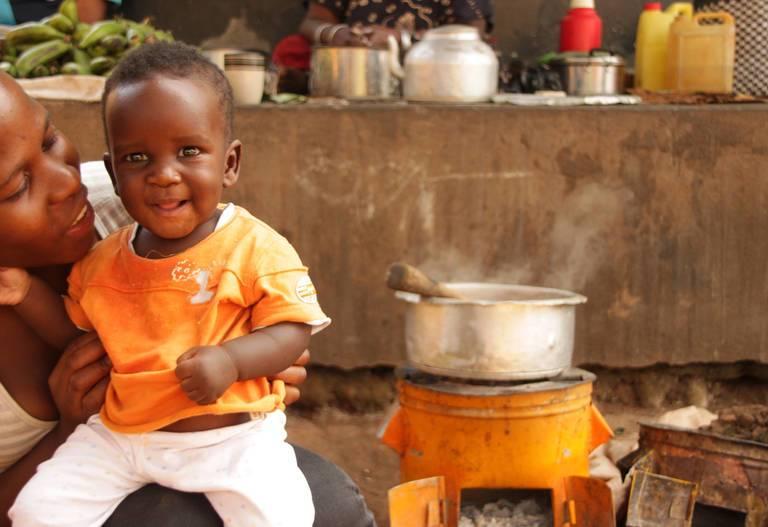

Today, the expressions "carbon credit" and "carbon offset" are almost household expressions. But do most of us know what they are? We often (mistakenly) think of carbon credits as relating only to companies, and big companies at that, that are compelled either by government regulations or consumer pressure to cut their carbon emissions.
Yet as Marisa de Belloy, CEO of non-profit Cool Effect explains, companies aren't the only ones that are working to address their greenhouse gas emissions. Individuals and families are now undertaking this goal as well.
Of course, before delving into why consumers are being encouraged to get involved, we figured it would be best to learn what a carbon credit is.
"A carbon credit is a unit of currency," explains de Belloy. "When a carbon project proves to a group of scientists that they are keeping harmful gas from entering the atmosphere, they are rewarded with a carbon credit." That is, one tonne of carbon reduced from the atmosphere equals one carbon credit.
That's the baseline that organizations like Cool Effect use when calibrating what it will take to cut carbon emissions in a particular industrial sector, global region or project. But it isn't the end of the story. What defines the actual price of carbon is the goal being undertaken. And Cool Effect's various projects, which are spread across the globe, are an excellent example of how that varies.
"Not all projects are utilizing the same technology or are in the same country," de Belloy explained, "therefore, carbon credits will be priced differently based on the specific carbon pollution reduction efforts they are succeeding in. For example, at Cool Effect, a carbon credit purchase to support a project in Uganda to help install efficient cookstoves costs $6.04 per tonne, however, the price for one carbon credit for a project supporting renewable energy in Costa Rica is $8.79."
The same is true for Cool Effect's efforts to save Madagascar's Makira rainforest. The $9.89/tonne for this project is based on the efforts to establish sustainable livelihoods like ecotourism, beekeeping and sustainable fish farming that can justify the protection of the forest's important biodiversity.
de Belloy stressed that the monetary amounts aren't "made-up numbers. Each project requires different circumstances for them to efficiently reduce the carbon they set out to reduce, so people can be assured their money is verifiably reducing the emissions at that particular project."
Part of that verification process lies in how Cool Effect selects the projects it is going to host on its platform, a "triple-verified" process, said de Belloy that is designed to meet one of the global standards for carbon offset programs: either Gold Standard, Verified Carbon Standard, Climate Action Reserve, American Carbon Registry, or the United Nation’s Clean Development Mechanism. Each impartial standard carries its own set of eligibility requirements.
Once verified, "[each] project is then independently verified by a third-party verifier that must also meet a set of standards, such as those required by the United Nations Framework Convention on Climate Change.
"Finally, Cool Effect completes its own extensive verification and financial analysis on each project. Each step is then repeated periodically to ensure continued excellence."
The Qori Q'oncha-Improved cook stove project in Peru, for example met the requirements of Gold Standard carbon credits. The cookstoves received a sustainability certification from Tuv Rheinland. It's also validated by Cool Effect's third-party research team and rated for its ability to address United Nations Sustainability Goals, like eradicating poverty, increasing good health and supporting the supply of affordable energy.
The Makira rainforest project, on the other hand, is qualified for Verified Carbon Standard and the CCBA, a certification that verifies societal benefits at the project, and validated by Rainforest Alliance. Like the Qori Q'oncha improved cookstove project, it addresses a host of UN Sustainability Goals by helping to elevate the living standards and opportunities of underserved communities in a sustainable way.
A cornerstone of Cool Effect's program, said de Belloy, is its adherence to what is called "additionality." In simplest terms, that means that projects that are selected for its portfolio are only ones that would remove additional carbon from the atmosphere beyond what could be expected to be removed by another means, for example government regulatory guidelines, a profit incentive, or other methods.
“If a business can make money from the activity, for example, composting, collecting methane, or preserving a forest – even if that activity is good for the environment, we assume the activity would happen anyway, without carbon credits, and so it doesn’t qualify as additional,” says de Belloy. “Cool Effect projects only exist because of the funds they can raise through carbon credits on Cool Effect and elsewhere.”
"Additionality is a way of ensuring that carbon is actually and verifiably removed from the atmosphere," explained de Belloy.
The organization's motto, "Carbon Done Correctly," said de Belloy, speaks to its commitment to ensure that only the projects that are verifiably reducing carbon get funding.
"[We] have handpicked only a small group of projects that meet the highest standards in terms of additionality, permanence, and accountability. 'Carbon Done Correctly' is validated by everything that Cool Effect does – from our projects, to our communication, to our full transparency," said de Belloy.
But it's also a reflection of Cool Effect's other philosophical perspective, that today's push to reduce greenhouse gases doesn't have to be ho-hum or tedious.
"All of the projects on our platform have something that makes them unique and interesting in their own right," with backstories that often appeal to the supporters that endorse them. A project that helps save a half-million acres from deforestation in Peru is also a story about how a community's livelihood was uplifted by sustainable farming methods.
"When we see the local benefits that these projects have in their communities, that is always extremely rewarding. A team recently visited the wind power project in Costa Rica where they met with one of the staff members who has had a much better quality of life since working for the project. It’s rewarding to be able to see the direct benefits of the project, such as job creation, and the members of the community making the connection to the benefits their work is having on the environment."
Those wins, said de Belloy, are just as much a part of Cool Effect's vision as saving the planet, one carbon credit at a time.
Images courtesy of Cool Effect.
How the New ‘Activist Investors’ Can Interfere with Long Term Smart & Sustainable Growth


Here at TriplePundit, we have long supported activist investors, since they have a unique opportunity to influence a company's response to climate change and other pertinent 3bl issues. They serve as a fly in the ointment for company executives and board directors, bringing issues to light that would never otherwise be considered by the top brass.
But shareholder activism can have its dark side, too, as Steve Blank recently explained on Harvard Business Review. The “corporate raiders” notorious in the 1980s and 1990s have morphed, rebranded, and now are quick to label themselves as the new activist investors for the 21st century. And unlike their corporate raider ancestors of the 20th century, these investors do not have to acquire a huge portion of a company’s stock in order to exact control. They often see their mission as to “work collaboratively” with the management and boards of “underperforming” and “undervalued” companies in order boost stock prices and “increase shareholder value” which does not necessarily serve the company's long term interests.
One such episode occurred at General Electric (GE) earlier this summer, when the company’s board decided to retire Jeff Immelt and replace him with John Flannery.
As the board mentioned, Immelt “led the successful transformation of GE into a simpler, stronger and more focused digital industrial portfolio aligned to key markets.”
But Flannery was seen as a turnaround artist, one who could revive the company’s stock price. Critics of the company noted that GE’s stock price was trading at about the same level as it was 20 years earlier. During Immelt’s tenure, GE built up cash reserves while selling off stagnant businesses such as entertainment, plastics, appliances and financial services. Immelt also accelerated investments in research and development and hired a team that helped transform the company’s culture into one that embraced technology.
Shortly after Flannery replaced Immelt, that team was let go, a $2 billion cost savings program was launched and GE currently is shifting away from its long-term innovation strategy.
These changes, Blank insists, were largely because of chess moves made by Trian Partners, an investment firm that bought $2.5 billion in GE stock, or the equivalent of less than 2 percent of the company’s equity. Shortly after that transaction, Trian issued a white paper, Transformation Underway . . . But No One Cares. The paper, laden with persuasive graphs and tables, argued that the GE’s investors were dubious that GE’s management would take any steps needed to drive the company’s stock price higher and pay higher dividends to shareholders.
The solution, said Trian, was to incur $20 billion in debt, boost operating margins to 18 percent in a few years and buy back approximately $100 billion in the company’s stock – double the $50 billion to which GE had reportedly committed.
But Immelt pushed back on that plan. While agreeing that Trian’s strategy would increase GE’s stock price (and therefore pad the value of the investment firm’s share in GE), he felt the cuts in expenditures and spike in debt would undermine GE’s long-term innovation goals.
Nevertheless, Trian was far more successful in communicating the benefits of its plan to GE’s board of directors. Immelt and many of his allies are gone, while Edward Garden, one of Trian’s founders, now has a seat on the company’s board.
Since Garden ascended to GE’s board last month, the company’s stock price is down $3 a share. Supporters of the company’s new strategy would respond that the company’s stock has fallen by over 25 percent so far this year, and investors need time to buy into GE’s recalibrated approach.
Hence Trian’s victory in this power struggle is a win for short-termism and investors who still insist on quarterly returns.
But Blank notes that if this trend of a small activist investor being able to topple an accomplished CEO continues, we will hear of less long-term strategies with a focus on R&D and innovation – in addition to more pink slips as employees are let go in the name of downsizing and reorgs. And for those who are still yearning for a revitalization of U.S. manufacturing, Trian’s victory is not encouraging – for either factory employees or the expectation that new innovations can generate both new investments, sustainable development and down the road, even the possibility of an increase in well-paying jobs.
Finally, at time when Washington, D.C. is determined to reverse the financial reforms that were seen as necessary in the wake of the 2008-2009 financial crises, this surge in activist investors does not bode well for effective corporate governance. The quest for quick profits means increased risks of unethical and risky shortcuts in order to boost shareholder returns.
Image credit: MJB/Flickr